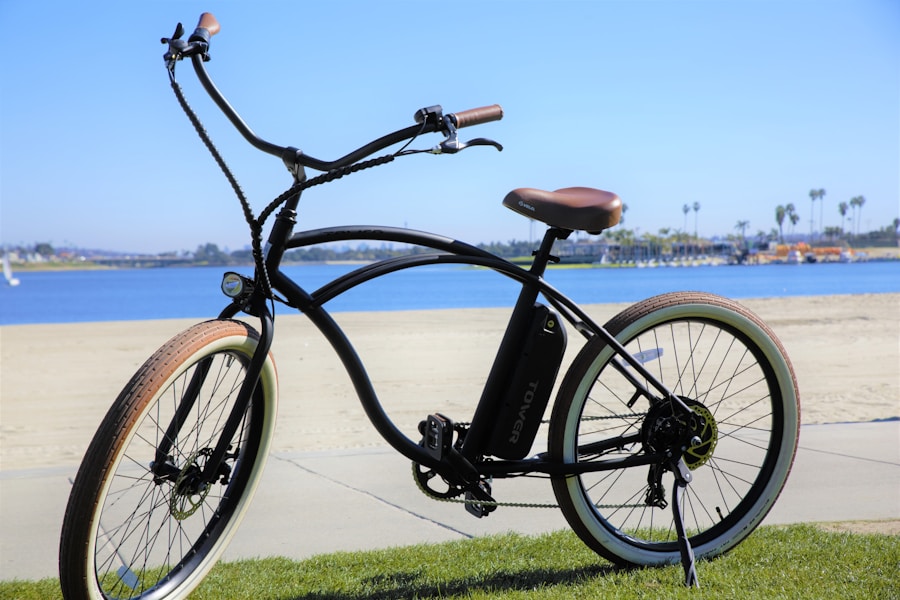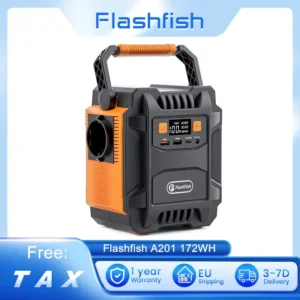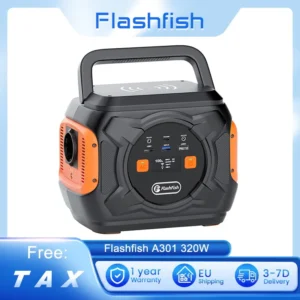Electric bikes, commonly referred to as e-bikes, have surged in popularity over the past decade, transforming the landscape of personal transportation. These innovative vehicles combine traditional cycling with electric propulsion, offering riders an efficient and eco-friendly alternative to conventional modes of transport. The integration of electric motors allows for a smoother ride, enabling cyclists to tackle longer distances and steeper inclines with ease.
As urban areas become increasingly congested and environmental concerns grow, e-bikes present a compelling solution for commuters and recreational riders alike. The appeal of electric bikes extends beyond mere convenience; they also promote a healthier lifestyle. By encouraging physical activity while reducing the strain associated with traditional cycling, e-bikes cater to a diverse demographic.
From seasoned cyclists seeking an extra boost to those who may be intimidated by the physical demands of biking, e-bikes offer an inclusive option that can accommodate various fitness levels. Furthermore, the environmental benefits of e-bikes cannot be overlooked. By replacing car trips with electric bike rides, individuals contribute to reduced carbon emissions and decreased traffic congestion, making e-bikes a sustainable choice for modern transportation.
Najważniejsze wnioski
- Electric bikes are bicycles with integrated electric motors that can be used for propulsion.
- There are various types of electric bikes, including city commuter, mountain, folding, and cargo bikes.
- City commuter electric bikes are designed for urban transportation, with features like fenders, lights, and racks for carrying cargo.
- Mountain electric bikes are built for off-road terrain, with features like suspension and durable tires.
- Folding electric bikes are compact and portable, making them convenient for commuting and storage in small spaces.
- Cargo electric bikes are designed to carry heavy loads, with features like large cargo racks and sturdy frames.
Types of Electric Bikes
Types of E-Bikes
Broadly speaking, e-bikes can be categorized into three main types: pedal-assist, throttle-controlled, and speed pedelecs. Pedal-assist bikes provide power only when the rider is pedaling, creating a natural cycling experience that encourages physical activity. Throttle-controlled bikes, on the other hand, allow riders to engage the motor without pedaling, offering a more relaxed riding experience. Speed pedelecs are designed for higher speeds and often require registration and licensing in some regions due to their powerful motors.
E-Bikes for Specific Environments
Within these categories, there are numerous subtypes that cater to specific riding environments and purposes. For instance, city commuter electric bikes are designed for urban environments, featuring lightweight frames and practical accessories like fenders and racks. Mountain electric bikes are built for off-road adventures, equipped with robust tires and advanced suspension systems to handle rugged terrain.
Specialized E-Bikes
Folding electric bikes offer portability and convenience for those with limited storage space or who need to combine biking with public transportation. Cargo electric bikes are engineered for heavy loads, making them ideal for deliveries or family outings. Each type of e-bike serves a unique purpose, allowing riders to select the model that best fits their lifestyle.
City Commuter Electric Bikes

City commuter electric bikes are specifically designed to navigate urban landscapes efficiently. These bikes typically feature a lightweight frame that allows for easy maneuverability in crowded streets and tight spaces. Many models come equipped with practical accessories such as integrated lights, fenders, and racks for carrying bags or groceries.
The emphasis on practicality makes city commuter e-bikes an attractive option for those looking to replace short car trips or public transport rides with a more sustainable mode of travel. One of the standout features of city commuter electric bikes is their pedal-assist technology. This system provides a boost when the rider pedals, making it easier to tackle hills or headwinds without excessive exertion.
For example, a commuter traveling from a lower elevation to a higher one can benefit significantly from this feature, arriving at their destination less fatigued and more refreshed. Additionally, many city commuter e-bikes come with built-in batteries that can be easily charged at home or work, ensuring that riders have sufficient power for their daily journeys. The combination of convenience, efficiency, and sustainability makes city commuter electric bikes an increasingly popular choice among urban dwellers.
Mountain Electric Bikes
| Model |
Motor Power (W) |
Battery Range (miles) |
Max Speed (mph) |
| Rocky Mountain Altitude Powerplay |
250 |
50 |
20 |
| Specialized Turbo Levo |
565 |
40 |
28 |
| Trek Powerfly |
250 |
60 |
20 |
Mountain electric bikes are engineered for adventure enthusiasts who seek to explore rugged terrains and challenging trails. These bikes are built with durable frames and high-quality components designed to withstand the rigors of off-road riding. Features such as wide tires provide enhanced traction on uneven surfaces, while advanced suspension systems absorb shocks from bumps and drops, ensuring a smooth ride even on the most challenging paths.
The electric motor in mountain e-bikes is typically more powerful than that found in city commuter models, allowing riders to conquer steep inclines and technical descents with relative ease. For instance, a mountain biker tackling a steep hill can rely on the motor’s assistance to maintain speed and momentum without exhausting themselves. This capability opens up new possibilities for exploration; riders can venture further into nature without the fear of fatigue limiting their journey.
Additionally, many mountain electric bikes come equipped with features like adjustable seat posts and hydraulic disc brakes, enhancing both comfort and control during rides.
Folding Electric Bikes
Folding electric bikes represent a unique solution for urban commuters and travelers who require portability without sacrificing performance. These bikes are designed to fold into compact sizes, making them easy to store in small apartments or transport on public transit systems. The folding mechanism typically involves a simple latch system that allows riders to collapse the bike quickly and efficiently.
Despite their compact design, folding electric bikes do not compromise on functionality or power. Many models are equipped with robust motors that provide ample assistance for commuting or leisurely rides. For example, a commuter can easily fold their bike and take it onto a bus or train during peak hours, avoiding the hassle of crowded public transport while still enjoying the benefits of cycling at their destination.
Additionally, folding e-bikes often feature adjustable handlebars and seats to accommodate various rider heights, ensuring comfort during use. This versatility makes them an appealing option for those who need a flexible transportation solution.
Cargo Electric Bikes

Cargo electric bikes are designed with practicality in mind, catering to individuals or businesses that require additional carrying capacity. These bikes often feature extended frames and robust racks capable of supporting heavy loads, making them ideal for transporting groceries, deliveries, or even children. The design typically includes reinforced components to ensure stability and safety while carrying substantial weight.
The electric motor in cargo e-bikes is usually more powerful than that found in standard models, providing the necessary assistance to handle the added weight without straining the rider. For instance, a parent using a cargo e-bike to transport children can benefit from the motor’s support when navigating hills or long distances. Many cargo electric bikes also come equipped with safety features such as integrated lights and reflective materials to enhance visibility during low-light conditions.
This focus on safety is crucial for riders who may be sharing the road with larger vehicles while carrying significant loads. In addition to personal use, cargo electric bikes have gained traction among businesses looking for sustainable delivery options. Companies can utilize these bikes for last-mile deliveries in urban areas, reducing their carbon footprint while maintaining efficiency.
The ability to navigate through traffic and access areas where larger vehicles cannot go makes cargo e-bikes an attractive alternative for businesses aiming to enhance their logistics while promoting eco-friendly practices. Electric bikes have revolutionized personal transportation by offering diverse options tailored to various needs and preferences. From city commuters seeking efficient travel solutions to adventure enthusiasts exploring rugged terrains on mountain e-bikes, there is an electric bike model suited for everyone.
As technology continues to advance and societal attitudes shift towards sustainability, the future of electric biking looks promising, paving the way for even more innovative designs and applications in the years to come.
Często zadawane pytania
What are the different types of electric bikes?
There are several types of electric bikes, including city e-bikes, mountain e-bikes, folding e-bikes, cargo e-bikes, and fat tire e-bikes.
What is a city e-bike?
A city e-bike is designed for urban commuting and features a comfortable upright riding position, fenders, lights, and a rear rack for carrying cargo.
What is a mountain e-bike?
A mountain e-bike, also known as an electric mountain bike or e-MTB, is designed for off-road trails and features suspension, knobby tires, and a more aggressive riding position.
What is a folding e-bike?
A folding e-bike is designed for easy storage and transportation, with a frame that can be folded down to a compact size.
What is a cargo e-bike?
A cargo e-bike is designed for carrying heavy loads and often features a long wheelbase, sturdy frame, and large cargo area in the front or rear.
What is a fat tire e-bike?
A fat tire e-bike is designed for riding on challenging terrain such as snow, sand, or mud, with wide tires that provide extra traction and stability.
 Przenośna elektrownia LANPWR 2200PRO z obsługą falownika sieciowego 200 W/400 W/600 W/800 W, wyjście prądu przemiennego LiFePO4 2048 Wh ± 51 TP7T (40 Ah/51,2 V)
1 × 1 811,98 €
Przenośna elektrownia LANPWR 2200PRO z obsługą falownika sieciowego 200 W/400 W/600 W/800 W, wyjście prądu przemiennego LiFePO4 2048 Wh ± 51 TP7T (40 Ah/51,2 V)
1 × 1 811,98 €  Flashfish A201 200 W przenośna elektrownia, 172,8 WH/48000 mAh, akumulator zapasowy do generatora słonecznego z gniazdami 220 V AC
1 × 173,58 €
Flashfish A201 200 W przenośna elektrownia, 172,8 WH/48000 mAh, akumulator zapasowy do generatora słonecznego z gniazdami 220 V AC
1 × 173,58 €  Przenośna stacja zasilania DaranEner NEO2000, generator słoneczny LiFePO4 o mocy 2073,6 Wh, moc wyjściowa AC 2000 W, pełne ładowanie 1,8 godziny, 14 portów
1 × 1 237,13 €
Przenośna stacja zasilania DaranEner NEO2000, generator słoneczny LiFePO4 o mocy 2073,6 Wh, moc wyjściowa AC 2000 W, pełne ładowanie 1,8 godziny, 14 portów
1 × 1 237,13 €  Flashfish A301 320W 292Wh 80000mAh przenośna stacja zasilania zapasowy generator słoneczny do podróży na świeżym powietrzu kemping dom
1 × 308,45 €
Flashfish A301 320W 292Wh 80000mAh przenośna stacja zasilania zapasowy generator słoneczny do podróży na świeżym powietrzu kemping dom
1 × 308,45 €  FOSSiBOT F3600 Pro przenośna stacja zasilająca, 2 dodatkowe akumulatory o rozszerzalnej pojemności, 3840 Wh/3600 W, wysoka moc wyjściowa AC, 13 portów wyjściowych
1 × 2 410,61 €
FOSSiBOT F3600 Pro przenośna stacja zasilająca, 2 dodatkowe akumulatory o rozszerzalnej pojemności, 3840 Wh/3600 W, wysoka moc wyjściowa AC, 13 portów wyjściowych
1 × 2 410,61 € 


